Toy Wind Instrument
The first artifact to discuss is the toy wind instrument excavated from the City of Houston wreck. At first glance this artifact looks almost like a normal trumpet but when compared to many real wind instruments it can be seen that this artifact is in fact a toy made to be similar to a trumpet but easy for a small child to use. The mouthpiece of the instrument is made of ceramic while the rest is made of brass. The overall length of the artifact is 30.3 cm. The mouthpiece 1.5 cm. The frame for the valves is 22.5 cm. The valve area itself is 14 cm. There are heavy concretions on valves 4, 5, 6, and 7, as well as, keys 1 and 2. The artifact is missing valves 8-10 and key 10 and some of the valves are separated from the frame.

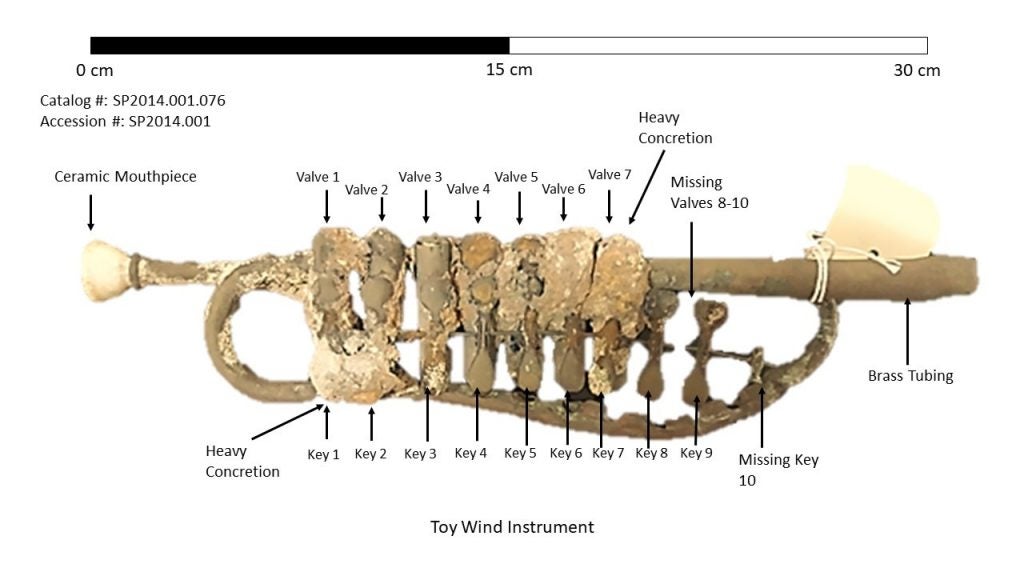
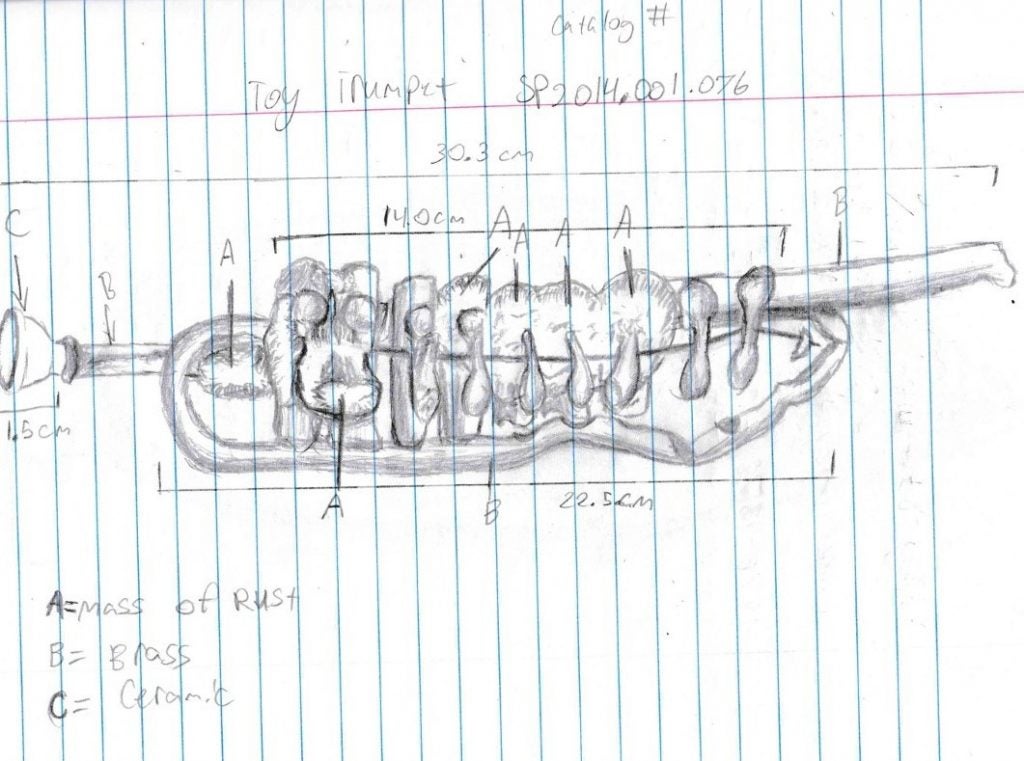
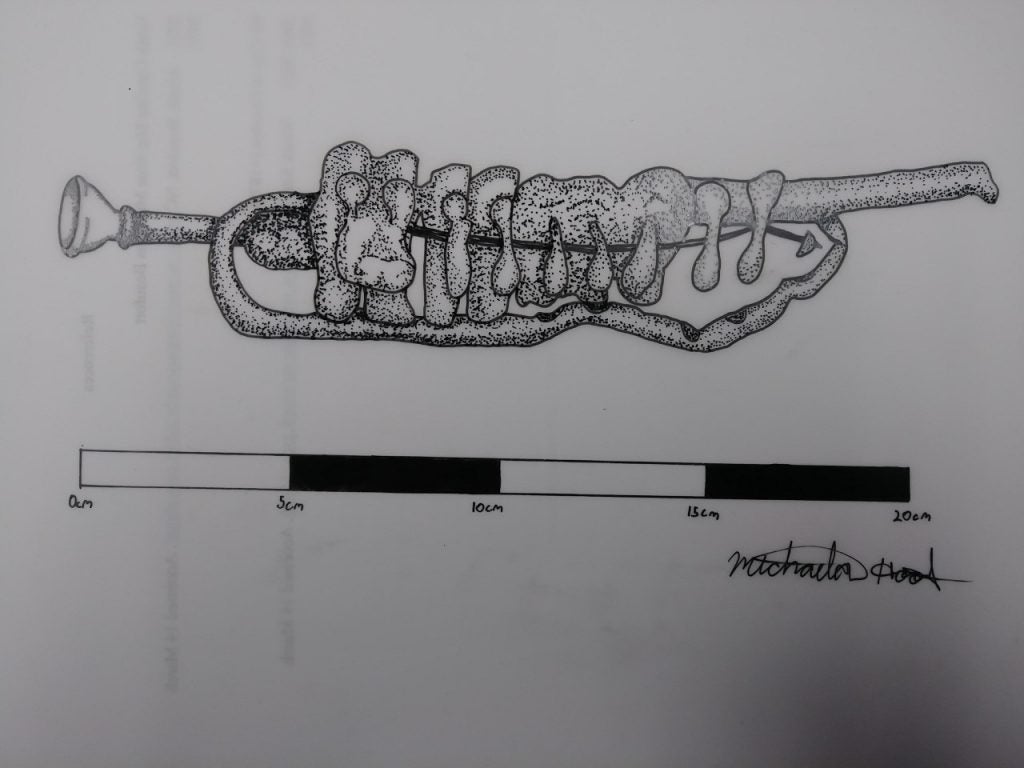
Toy Steamboat

The second artifact is a toy steamboat excavated from the site. The entire instrument is made of brass. The artifact length is 31 cm. The width is 12.8 cm. The missing section of the port side rail is 3.4 cm. The boiler is 8.6 cm and the steam stack is 5 cm tall from boiler. The boat is missing mechanical parts such as the propeller, turn tiller, and vertical hand crank. There are white and yellow concretions covering the boat on port side of bow and bottom of stern, near where the propeller would be. The port side rail is bent, cracked, and missing a piece.
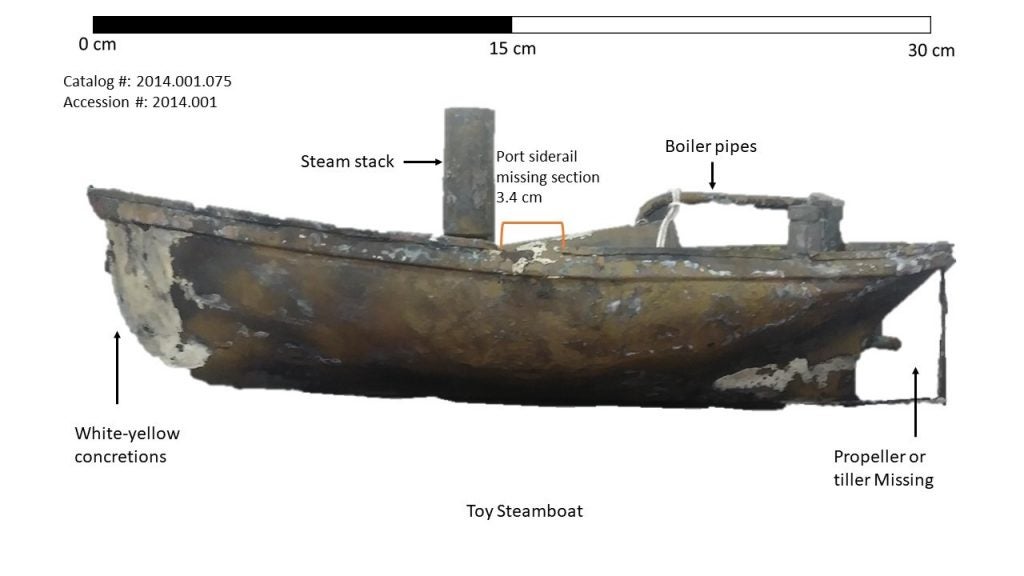
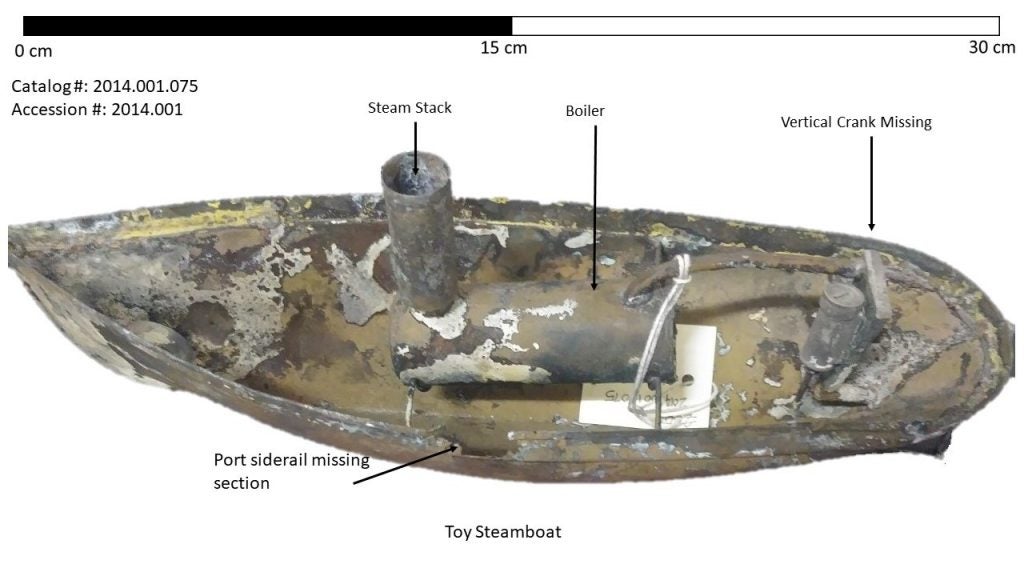
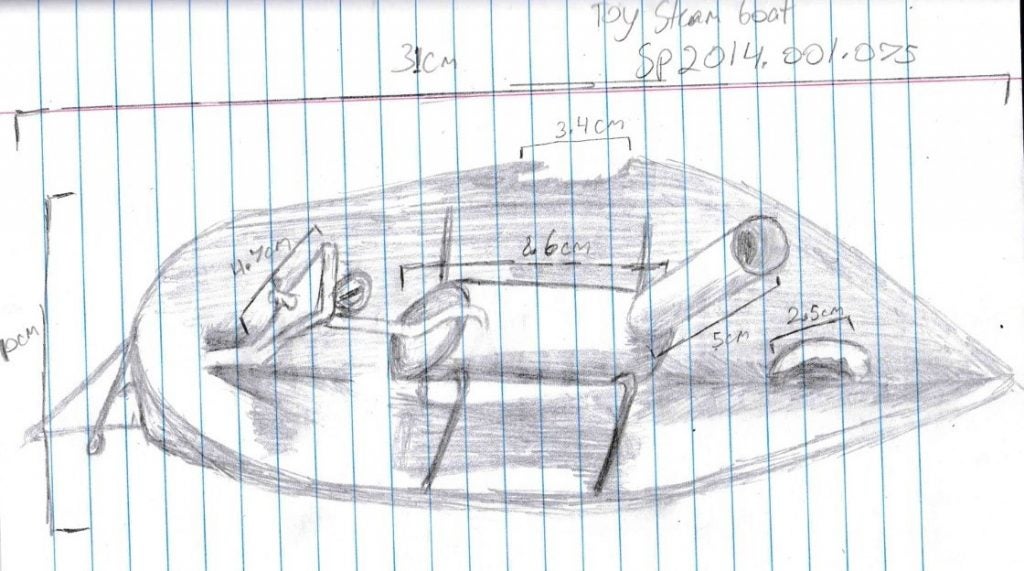
Curation of Artifacts
The wind instrument has heavy concretions and missing sections. While the toy steamboat has missing pieces and discoloration from concretion. These artifacts are not the only ones that still have concretion and other issues. The City of Houston collection has an extensive number of artifacts that have been cataloged and documented but have not yet entered conservation for the removal of concretions and other acts of preservation. This is not due to the neglect of the facility, but the funding and staff needed for the preservation of these artifacts are more than this small facility can currently perform.
– Michaela Hoots
